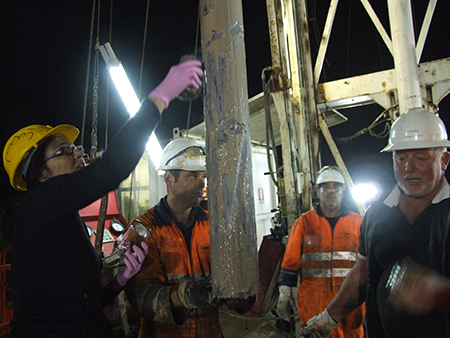Source: Geochemistry, Geophysics, Geosystems
At least 10% of the global population lives within 100 kilometers of a historically active volcano. Some of these people live near a collapsed volcano, like the residents of Naples neighboring the Campi Flegrei caldera. Although a caldera may appear to be more safe than a volcanic cone, the potential danger for natural hazard is not gone.
A collapse is often triggered by rapid magma loss from the magma chamber, usually following an eruption, so the hollow cone of the volcano caves in on itself. However, calderas can remain active. Two massive eruptions in the past caused the Campi Flegrei caldera to collapse: the Campanian Ignimbrite, which occurred 39,000 years ago, and the Neapolitan Yellow Tuff, which occurred 15,000 years ago.
But scientists—and residents around the caldera—fear another eruption to come. Right now, the alert for the Campi Flegrei caldera has been raised from “base” volcanic activity to “attention” status.

To get an accurate understanding of the caldera, De Natale et al. turned to scientific drilling. The Campi Flegrei Deep Drilling Project (CFDDP) drilled to a depth of 501 meters in western Naples, the morphological limit of Campi Flegrei caldera.
Drilling gives scientists a precise view into the deep structures of the caldera, its geothermal characteristics, and its magma chemistry. All these can reveal clues to how the caldera formed. The researchers took samples from different depths of the drill site and measured argon isotopes periodically so that they could estimate the age of various layers.
The scientists combined the isotopic ages, fossil findings, and historical sea level records to assess the history of the volcano and how Campi Flegrei changed over time. The deeper layers between 250 and 501 meters do not contain fossils, meaning that the volcano was well above sea level more than 35,000 years ago. In the shallower layers, the scientists found microfossils that indicate an ocean environment, confirming that sometime between 17,000 and 35,000 years ago, the volcano collapsed.

The rock types and ages at the drill site also reveal a curious finding: The amount of collapse attributed to the older and larger Campanian Ignimbrite eruption is smaller than the collapse that occurred after the eruption of the Neapolitan Yellow Tuff. Although there could be many reasons for the smaller collapse after the mega eruption, the authors discuss an alternative hypothesis: that the Campanian Ignimbrite did not erupt from Campi Flegrei (which was just involved as a peripheral eruption vent), but rather from fractures to the north of the caldera. This hypothesis would explain the low-level collapse in the caldera because the magma chamber would have remained intact.
Additional results from the drill site reveal that further caldera collapse won’t extend into the central city of Naples. However, the authors conclude that there is a complex mechanism that drove the caldera collapse that requires further study to better predict future eruptions in this major metropolitan area of Italy. (Geochemistry, Geophysics, Geosystems, doi:10.1002/2015GC006183, 2016)
—Alexandra Branscombe, Freelance Writer
Citation:
Branscombe, A. (2017), Deep drilling reveals puzzling history of Campi Flegrei caldera, Eos, 98, https://doi.org/10.1029/2017EO067075. Published on 01 February 2017.
Text © 2017. The authors. CC BY-NC-ND 3.0
Except where otherwise noted, images are subject to copyright. Any reuse without express permission from the copyright owner is prohibited.

